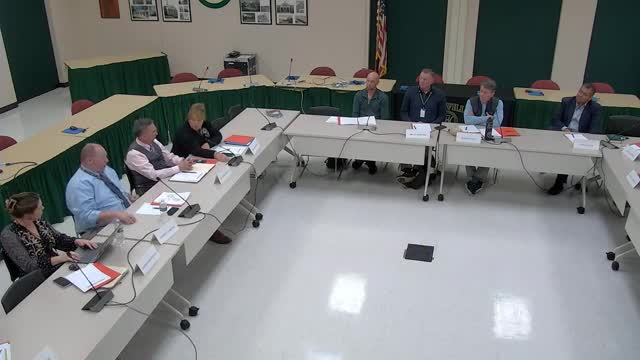Transportation Costs Surge as Bus Companies Face Crisis
October 31, 2024 | THREE VILLAGE CENTRAL SCHOOL DISTRICT, School Districts, New York
This article was created by AI summarizing key points discussed. AI makes mistakes, so for full details and context, please refer to the video of the full meeting. Please report any errors so we can fix them. Report an error »

During a recent government meeting, officials discussed the complexities surrounding transportation contracts for school bus services, highlighting potential challenges and financial implications for the district. Currently, contracts are renewed on a year-to-year basis, with extensions tied to the Consumer Price Index (CPI) as determined by the state education department. This means that any increase in contract costs cannot exceed the CPI, which is announced in June for the upcoming year.
However, concerns were raised about the sustainability of this model, particularly as bus companies face rising operational costs, including the transition to electric vehicles. One official noted that if a bus company cannot extend their contract at the CPI rate, the district would be forced to initiate a Request for Proposals (RFP) process. This could lead to significant price increases, as companies may propose hikes of 10% to 18% or more, leaving the district with limited options due to a shrinking pool of service providers.
The discussion also touched on the impact of the COVID-19 pandemic on transportation contracts. Many districts that halted payments to bus companies during school closures faced contract breaches, resulting in new RFPs and subsequent price increases. The district in question managed to maintain its contract with Suffolk Transportation, avoiding the steep price hikes experienced by others.
Looking ahead, officials anticipate that the bus company will soon indicate they can no longer extend contracts at the CPI rate, which could lead to substantial increases in transportation costs. Additionally, the district is facing negotiations with multiple bargaining units, which could further complicate budgetary considerations.
The meeting concluded with a suggestion to explore the long-term feasibility of the district operating its own bus fleet, considering potential grants for electric vehicles and charging infrastructure. However, officials acknowledged the challenges of hiring and retaining bus drivers amid a current shortage, as well as the need for additional facilities to accommodate a new fleet. The discussion underscored the need for strategic planning to navigate the evolving landscape of school transportation services.
However, concerns were raised about the sustainability of this model, particularly as bus companies face rising operational costs, including the transition to electric vehicles. One official noted that if a bus company cannot extend their contract at the CPI rate, the district would be forced to initiate a Request for Proposals (RFP) process. This could lead to significant price increases, as companies may propose hikes of 10% to 18% or more, leaving the district with limited options due to a shrinking pool of service providers.
The discussion also touched on the impact of the COVID-19 pandemic on transportation contracts. Many districts that halted payments to bus companies during school closures faced contract breaches, resulting in new RFPs and subsequent price increases. The district in question managed to maintain its contract with Suffolk Transportation, avoiding the steep price hikes experienced by others.
Looking ahead, officials anticipate that the bus company will soon indicate they can no longer extend contracts at the CPI rate, which could lead to substantial increases in transportation costs. Additionally, the district is facing negotiations with multiple bargaining units, which could further complicate budgetary considerations.
The meeting concluded with a suggestion to explore the long-term feasibility of the district operating its own bus fleet, considering potential grants for electric vehicles and charging infrastructure. However, officials acknowledged the challenges of hiring and retaining bus drivers amid a current shortage, as well as the need for additional facilities to accommodate a new fleet. The discussion underscored the need for strategic planning to navigate the evolving landscape of school transportation services.
View full meeting
This article is based on a recent meeting—watch the full video and explore the complete transcript for deeper insights into the discussion.
View full meeting
